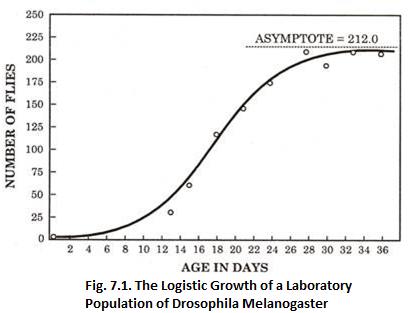population growth variation among nations
Definition:
In context of solar system, it took nearly 4000 million years for the earth, after the delicate adjustment of chemical elements in its various spheres, to finally reach to a state to sustain life. Hence origin of life was not a simple phenomenon, rather it was a very complicated process involving number of chemical complex reactions, conditions of temperature and pressure over a period of 4000 million years.
The period of 600 million years from the present era witnessed tremendous explosion of life forms through evolutionary process with man at the apex of the evolution, appearing only a few million years ago. At present, it is estimated that earth has about 10 to 30 million life forms of which man is one of the life form.
But, because of the ability of the man to change the environment according to his needs, he has acquired a supreme status among the existing life forms. However, of fate, perhaps his ability to change environment as desired has now posed a real question to him, as how to plan his future survival.
This question has emerged because of his over indulgence with natural resources in order to satisfy the need of his ever growing population and more so the unquenchable desire for more comforts which in real terms is energy intensive life style. It needs to be understood clearly that natural resources are limited. They have limited carrying capacity and with continued interference beyond tolerance limits they will exhaust sooner or later
Population Growth:
Each population has a characterized pattern of increase which is termed as its growth form. It increases in size in a characteristic S-Shaped or sigmoid fashion. When a population starts growing, first the growing is slow, and then it becomes rapid and finally slows down until equilibrium is reached.
If we plot time on n-axis and number of organisms any-axis, on a graph paper, we should get a s-shaped sigmoid curve. Human population shows a s-shaped growth. However, if the growth stops abruptly, a J-shaped growth curve is obtained.
The level beyond which no major increase can occur is called the saturation level or carrying capacity the following states have been ruined to occur in the population growth form:
(1) The Period of Positive Growth:
The curve representing this period (Fig. 7.1) is usually sigmoid or S-shaped in form.
(2) The Equilibrium Position:
Equilibrium state can be defined as the onion numerical stability i.e. the average size helped by a population over a considerable period of time. Since human populations have not yet attained their maximum growth, it has not been possible to report on their equilibrium state.
(3) Oscillations and Fluctuations:
Oscillations and the symmetrical departures from equilibrium whereas asymmetrical departures constitute population fluctuations.
(4) Decline and Extinction:
A decline in the population shows consistent and progressive reduction of the populations below the equilibrium or lowers than the usual average of fluctuations or oscillation whereas, extinction can be defined as the final dying out of the group. Although these two terms are separable by definition they actually belong to each other.
The world’s population is not properly balanced, more than half of the world’s people live in Asia (approx. 3.7) billion), which accounts for only one fifth of the world’s land area. While north, central and south America together occupy more than a quarter of the land surface and have only one -fifth of the population (1.3 billion).
The African continent also accounts for a quarter of the land surface but has just over one eighth (840 million) of the world population. On the other hand Europe whose area is only one twenty fifth of the total has about one- ninth (728 million) of the world’s people.
The distribution within the continents is also uneven. In Asia, China alone, with about 1.28 billion people, accounts for one-third Asian and one-fifth of the world population. The Indian subcontinent has a further 1.3 billion people — India, 1.05 billion; Pakistan, 143.5 million; Bangladesh, 133.6 million; Nepal, 23.9 million; Sri Lanka, 18.9 million; Bhutan, 0.9 million; and Maldives, 0.3 million.
In Europe too, the population is unevenly distributed. Far less people live in Northern European countries than in other European countries. The most populous European countries are Russia (143.5 million), Germany (82.4 million), United Kingdom (60.2 million), France (59.5 million); Italy (58.1 million), Ukraine (48.2 million), Spain (41.3 million) and Poland (38.6 million).
The distribution of population depends to a large extent on the quality of land. Thus population density (i.e. the number of people living in unit area) varies widely, the densely populated areas include western Europe, the Indian subcontinent, the plains and river valleys of China and north eastern USA.
The factors encouraging settlement are good land, flat or undulating terrain the existence of renewable resources, a good climate suitable for wide range of crops or a less equable climate suitable for cultivation of specialized cash crops. Other factors include extension of roads, railways and other modes of transportation. The factors discouraging settlement are usually climate or relief factors; the main factors are cold, altitude, heat, drought, poor soils etc.




